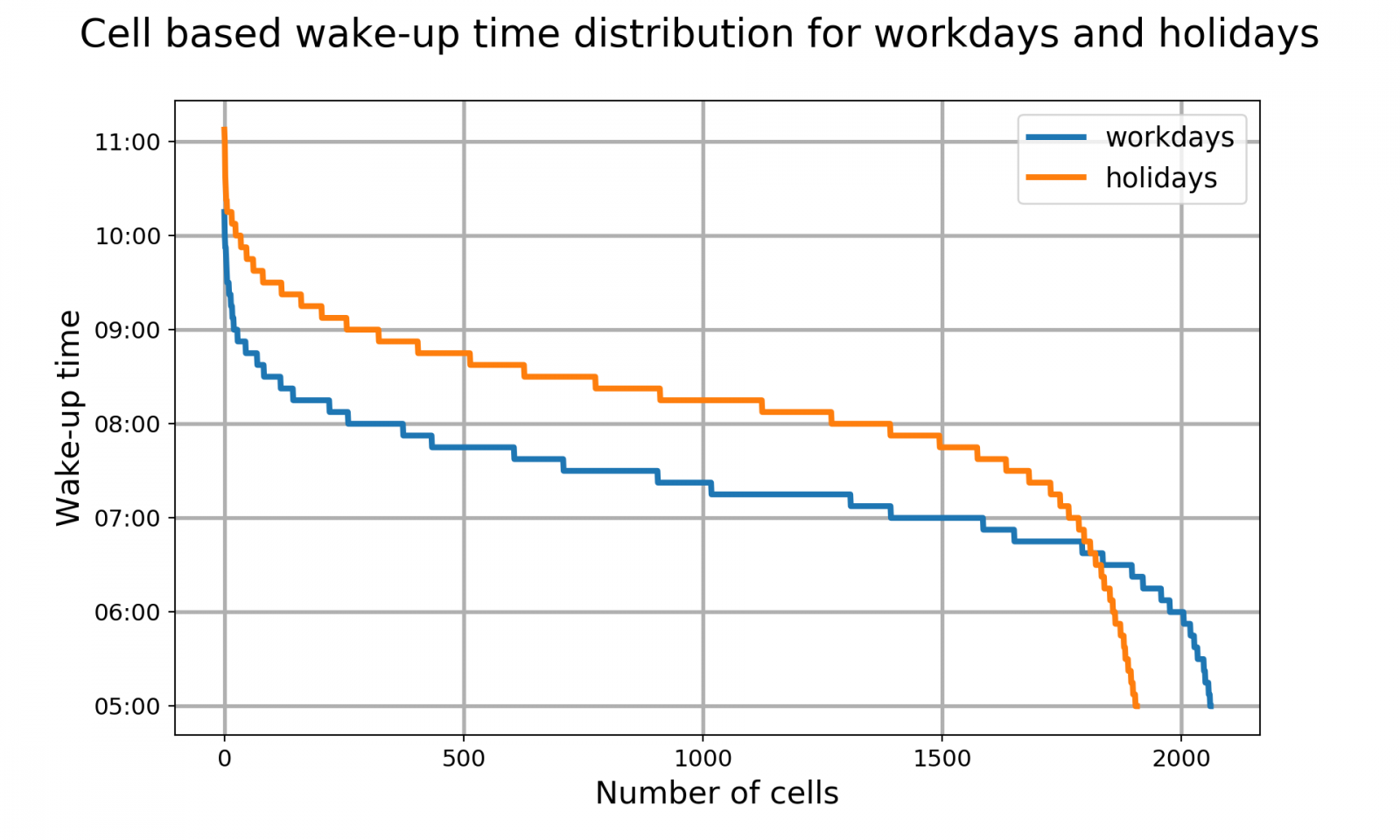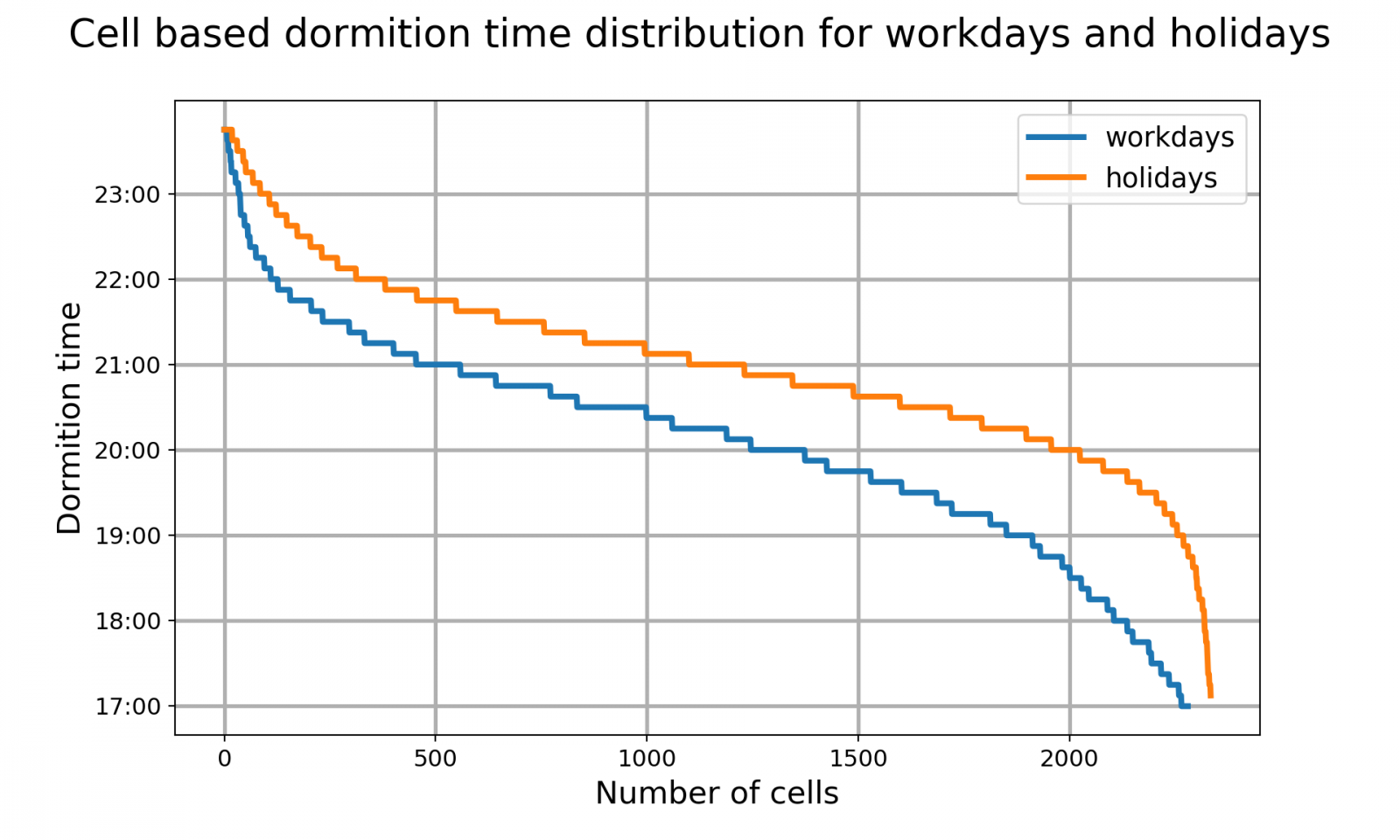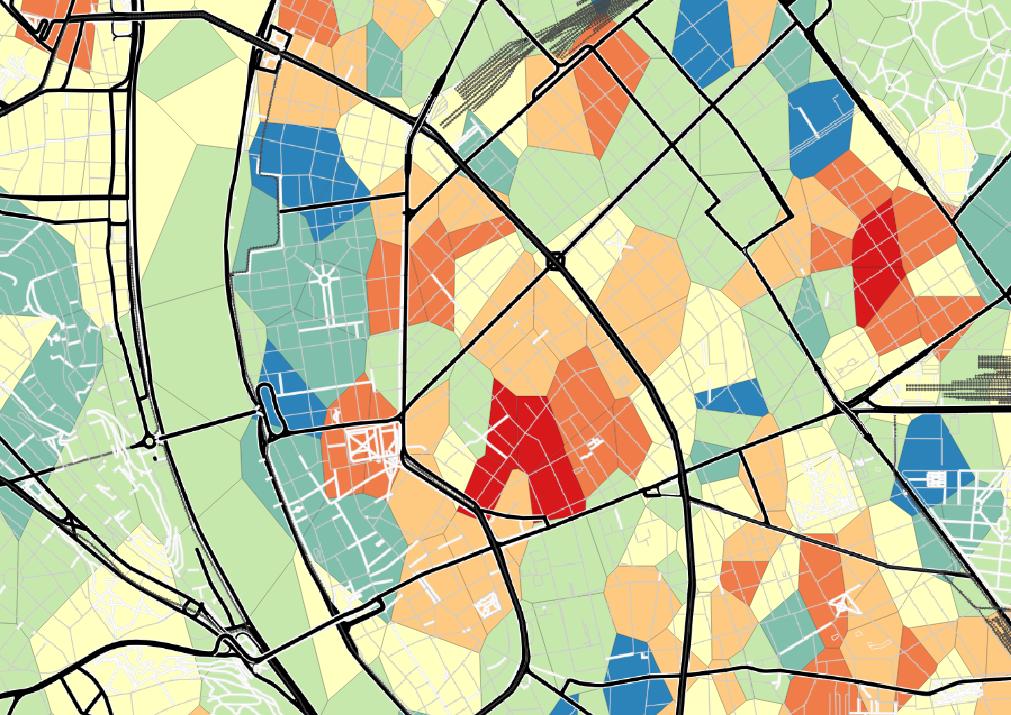Evaluation of wake-up time using mobile phone network data
by Gergő Pintér (PhD Student) Host: SoBigData.IT, ISTI-CNR, Pisa, Italy
My thesis work is about characterizing the mobility customs of the urban population. One interesting question is when do people wake-up (start their day)? Naturally, it is not possible to literally know when somebody wakes up using mobile phone data, so the question needs to be rephrased. Usually, when do they start to use the mobile phone network? When is the first activity in a day? Also, when they stop using the mobile phone network in the night? And the answers to these questions, the “wake-up” time and the “dormition” time might be a suitable indicator to classify the areas of a city (in this case Budapest) based on the behaviour of the residents.
The problem is that the mobile phone activities are sparse at the individual level, there can be several hours of deviation in the time of the first (and last) activity. Thus the mobile phone activity of the devices with the same home location (determined by the most frequent rest-time location) are aggregated to mobile phone cells and via them to a given area of the city (e.g. a suburb).
We have one month of CDR-like data for Budapest, recorded in April 2017. For every single day of this data set, the minimum and the maximum activity level is determined. The minimum activity is around 4 AM and the maximum is usually in the late afternoon. The time when the mean of the maximum and the minimum value is reached on the positive edge is considered the “wake-up” time. Analogously, the time the mean if reached on the negative edge of the daily time series is considered the “dormition” time.
At his point we two times for every mobile phone cell and every day. To get the usual “wake-up” time of a cell, the median of the daily values are calculated. This can be processed for a larger area aggregating the activity of several cells. When we are talking about daily routine the most common pattern is to go to work in the morning and then go home in the afternoon. Any other location which is regularly visited (gym, supermarket, children’s school, etc.) is just an extension to this pattern. But, it is only valid on the workdays. The weekend/holiday routine can be quite different, that is the reason why the holidays are calculated separately.
The expectation was that the results for the workdays and the holidays are different, namely, people wake up later on the weekend, as they do not have to go to work and as they do not have to wake up so early, they might go to bed later as well. The figure below shows the “wake-up” times for every mobile phone cells, separately for workdays and holidays. (The cells are sorted decreasingly.) On holidays, people start to use the mobile phone network about one hour later in most of the cells.

Cell based “wake-up” time distribution for workdays and holidays
The figure below shows the “dormition” times, and confirms that the people tends to end their day later if they do not have to wake up so early. These are preliminary results and calculated only for urban environment. It would be interesting to compare these results with rural areas and using a longer time period to check whether there is significant difference between different period of a year.

Cell based “domrition” time distribution for workdays and holidays
The last figure shows the downtown of Budapest colored by the “dormition” times. Read areas means that the mobile phone activity is pretty high even around midnight. The red area in the middle is actually quite famous of its pubs and nightlife.

Budapest downtown colored by the “dormition” times, red areas represent active nightlife

